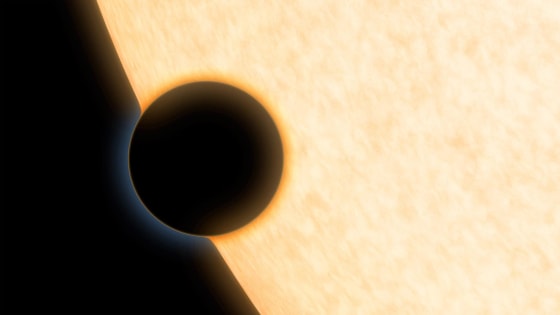A Neptune-size planet beyond the solar system has telltale traces of water vapor in its atmosphere, making it the smallest exoplanet known to have the wet stuff yet, scientists say. Several massive Jupiter-size giants have had the components of their atmosphere examined, but until now, the atmospheres of smaller planets have proved more elusive.
By observing the spectrum of light that passes through an exoplanet’s atmosphere, scientists can determine what it is made up of. For HAT P-11b, a planet roughly four times the radius of Earth, that makeup is 90 percent hydrogen, with traces of water vapor.
"Detecting it is both a confirmation of our theories and revealing for the bulk of the spectrum that we can observe," lead study author Jonathan Fraine, of the University of Maryland, told Space.com.
Scientists have been studying the atmospheres of Jupiter-like planets for years, but smaller planets produce a smaller signal that is more challenging to observe. In addition to learning more about the atmospheres of exoplanets as they appear today, scientists can also use HAT P-11b to understand more about the planet's interior and its formation. The research is detailed in the Sept. 25 issue of the journal Nature.
—Nola Taylor Redd, Space.com
This is a condensed version of a report from Space.com. Read the full report. Follow Space.com onTwitter,Facebook andGoogle+.
